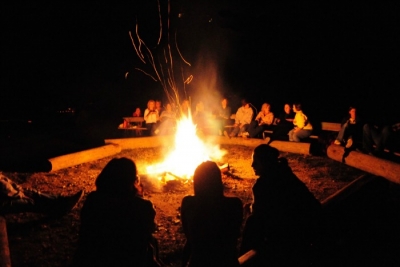
Shadows occur when light is partially or totally absorbed, reflected or just deviated by something in its way. Some regions becoming dimmer than others. If a flame is the only source of light, it will not cast a shadow because it is not in the way of any other light. But what if it is found near a brighter source? In this case, it actually can cast a shadow, even if it is often difficult to see it. Flames are made of gas and dust heated at very high temperatures, often including smoke which can cast shadows. Flames can also absorb part of the light and not be fully transparent. Besides, hot gas in flames can cast shadows by itself, as its movements affect the trajectory of light. Hot air movements similarly explain the dancing shadows sometimes observed above hot tar on scorching sunny days.
A fire flame can have a shadow because the flames include hot air, soot, and combustion products, you will see fires cast shadows if you illuminate a flame with a stronger beam of light source. In a light beam, the shadow zone is the area where there is lower light than the majority of the beam.
In the frequent form of flames consisting of hydrocarbon, the oxygen supply and the quantity of fuel-oxygen pre-mixing, influence the rate of combustion and the temperature level of the flame. And this is mainly responsible for the generation of distinct colors in a flame.
Picture Credit : Google




